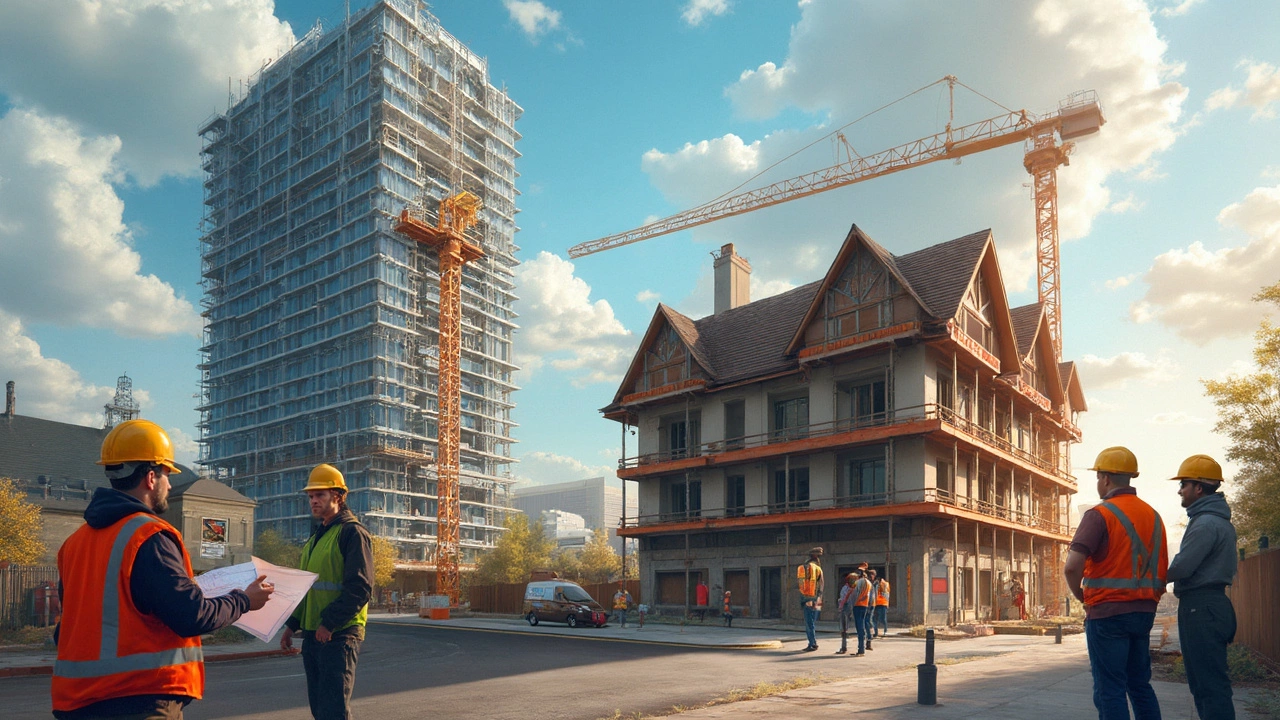Building Codes: Essential Guide for Homeowners and Builders
If you’re planning a remodel, an extension, or even a brand‑new build, you’ll run into building codes. They’re the rules that keep homes safe, sound, and energy‑efficient. Skipping them can mean costly fixes, fines, or even having to tear down work you’ve already done. Below you’ll get the basics you need to start any project on the right foot.
Why Building Codes Matter
First off, building codes protect you and your family. They set minimum standards for structural strength, fire safety, ventilation, and accessibility. For example, a wall that can’t bear the load of a roof could collapse, and a faulty electrical layout can spark a fire. By following the code, you avoid those risks.
Second, compliance helps your property’s value. When you sell, a buyer (or their mortgage lender) will check that any work met the standards. If the paperwork isn’t there, you could lose money or face a delay while you sort it out.
Finally, building codes keep the construction industry fair. Everyone works to the same baseline, so you’re not competing against shortcuts that cut safety or quality.
Common Code Requirements You’ll Face
Structural standards – The code tells you how thick walls need to be, what sort of joists are required, and how deep footings must go. If you’re raising a floor or adding a loft, you’ll need a structural engineer’s sign‑off.
Fire safety – This includes smoke alarms on each level, fire‑resistant materials for walls near kitchens, and safe escape routes. In many UK homes, a fire‑rated door is mandatory between the garage and living space.
Ventilation and moisture control – Proper ventilation stops mold from spreading—a common issue in new builds or poorly ventilated bathrooms. The code usually requires extractor fans in kitchens and bathrooms, plus breathable wall layers.
Electrical and plumbing – Electrical work must be done by a qualified electrician and inspected under Part P of the Building Regulations. Plumbing needs to meet standards for pipe size, pressure, and drainage to avoid leaks and water damage.
Energy efficiency – New builds and major renovations must meet Part L standards. That means good insulation, double‑glazed windows, and efficient heating systems. It not only cuts bills but also keeps you on the right side of the law.
Before you start, check if your project needs Building Control approval. Most extensions over a certain size, loft conversions, and new homes do. You can either use your local council’s Building Control team or hire an approved inspector.
Gathering the right documents early saves time. You’ll need plans, calculations, and sometimes a party wall agreement if you’re working close to a neighbor’s property. Keep everything in a single folder—digital or paper—so the inspector can see it quickly.
When you get a notice of completion, the inspector will issue a completion certificate. Keep that safe; it’s proof that the work meets the code and can be shown to future buyers or insurers.
In short, building codes might feel like extra paperwork, but they’re there to protect you, your money, and the people who live in the building. Follow the steps, get the right professionals involved, and you’ll avoid headaches down the line.
Ready to start your project? Grab the latest UK Building Regulations PDF, sketch out your ideas, and schedule a chat with a local builder or architect. Knowing the code before you lift a hammer makes the whole process smoother and cheaper.
What Is Type 5 Building Construction? Understanding Wood-Framed Structures in Commercial Use
- Gavin Whitaker
- |
- |
- 0
Type 5 building construction uses wood framing for small commercial buildings like retail stores and clinics. Learn how it works, where it's allowed, fire safety rules, and what to check before leasing or buying.
View moreCommercial Structure Types: What Construction Means for Your Business
- Gavin Whitaker
- |
- |
- 0
Choosing the type of construction for a commercial structure is more than just picking out materials—it's about meeting safety codes, insurance guidelines, and long-term cost concerns. This article breaks down commercial construction types, from steel to wood frames and beyond. You'll see why the materials and methods matter for everything from fire safety to how much you pay for coverage. Find out how to tell what type your building is—and what that means for your next project.
View more
